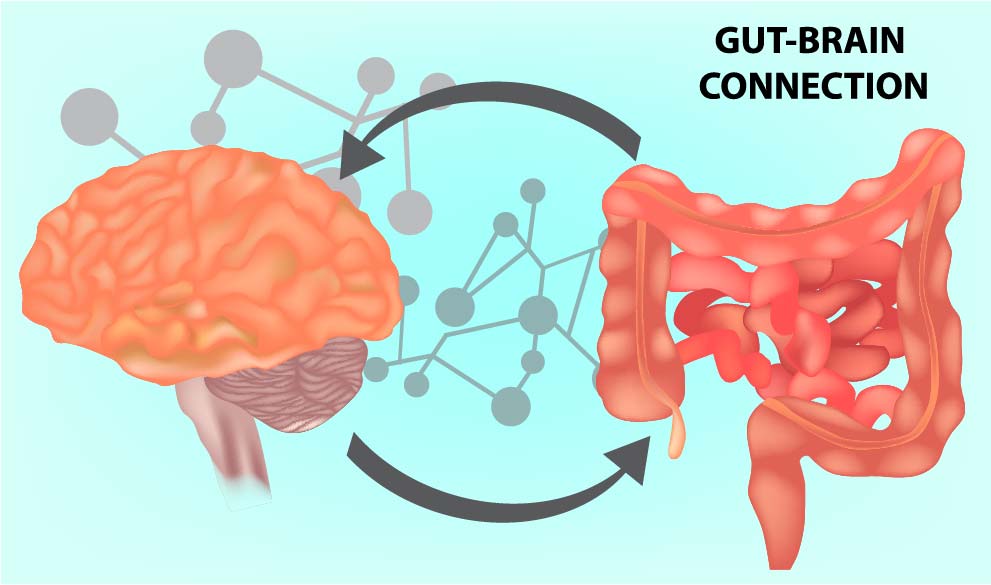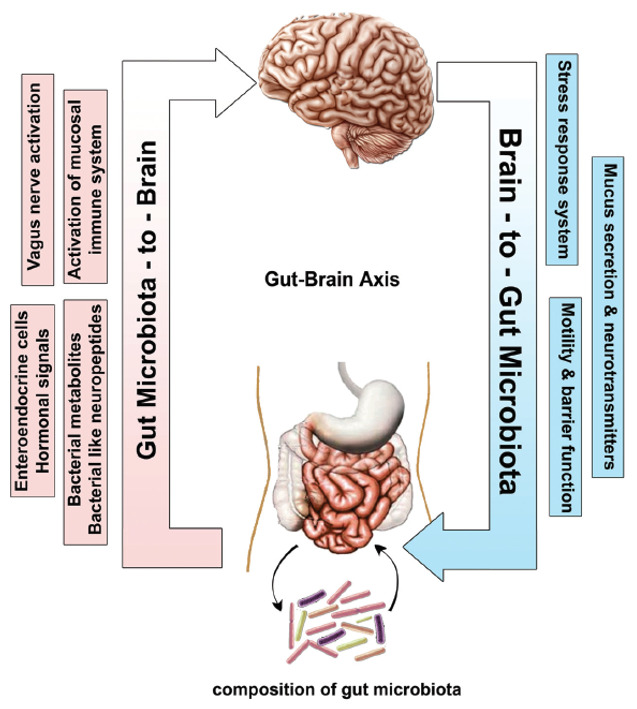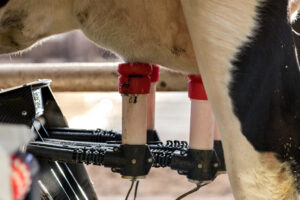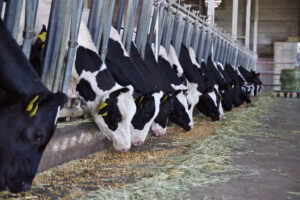In animal husbandry, there is frequent talk of balanced intestinal flora, of action on the microbiota in the interest of improving production levels. Whether in ruminants, pigs or poultry, the “microbiota” fascinates by its powers on health and behaviour …. How does this mysterious ‘organ’ work? We sometimes hear the expression “second brain”, but how do these two entities interact?

Hurray for the functional microbiota!
A simplified view of the digestive microbiota would be to say that it is composed of :
- harmful bacteria (E. coli, Clostridium)
- and beneficial bacteria (Lactobacilli, Bifidobacteria),
The reality is more complex as it depends on the bacterial strains and their functions. The reality is more complex as it depends on the bacterial strains and their functions. Each bacterium can have several functions but different bacteria can also have similar functions, so different microbiota could well have the same overall functions.
Gut and brain: How do they communicate?
Before understanding how the gut and brain communicate, the focus was on shifting the composition of the flora towards a balance that seemed more promising. The use of certain feed additives (prebiotics, probiotics, essential oils, plant extracts) can modify its composition and functions. However, you may also find that it can be modified under certain conditions such as stress or certain pathologies.
In fact, there is an axis that links the gut-microbiota and the brain in a bidirectional manner: more commonly known as the “microbiota-gut-brain” axis. This axis involves nervous, immune, endocrine and metabolic pathways.
Gut-brain axis, or brain-gut axis: in which direction does the information flow?
The intestine-brain axis has been studied in particular in the Human and in the mouse (as a model for the Human). In humans, it has been shown that the top-down model, from the brain to the gut (brain-microbiota axis), could, for example, result from chronic stress or a traumatic life event. The brain then activates the Autonomic Nervous System and the Hypothalamic-Pituitary-Adrenal axis, which act on the neuronal plasticity of the Enteric Nervous System. This will lead to an increase in intestinal sensitivity and permeability or an alteration of the microbiota.
Conversely, the bottom-up model, from the gut to the brain (microbiota-brain axis), is triggered by an alteration of the intestinal flora, a gastrointestinal infection or an intestinal inflammation. These events alter the neuronal plasticity of the enteric nervous system, which, via different fibres, alters behaviour or leads to psychological disorders.

Source : Al-Asmakh et al. -2012- Gut microbial communities modulating brain development and function
The gut-brain axis is now widely described in pathologies such as Parkinson’s, Alzheimer’s and autism. Indeed, it would seem that these brain diseases are actually the result of an alteration in the microbiota, with a reduction in bacterial diversity but also a reduction in certain bacteria with a positive connotation and, conversely, an over-representation of certain bacteria with a negative connotation.
What is the situation in farm animals?
Microbiota: a real issue for animal production
Although the gut-brain or brain-microbiota axis has mainly been described in humans and mice, it is valid for all animal species. In recent years, more and more studies have focused on this axis in farm animals. These studies show that the gut microbiota is able to influence their behaviour (microbiota-brain axis) but also that the brain influences digestive health (brain-microbiota axis).
From the scientific model
For example, a study conducted in axenic quails showed that the absence of microbiota reduced emotional reactivity in fearful situations (Kraimi et al.-2018- Absence of gut microbiota reduces emotional reactivity in Japanese quails). The same authors also showed its impact on emotional reactivity by selecting two types of quail lines, one easily frightened (E+) and the other less easily frightened (E-). Axenic quails of the E+ line were inoculated with microbiota from E+ or E- quails and those receiving the E- microbiota showed less emotional reactivity than those receiving the E+ microbiota (Kraimi et al. -2019- Effects of a gut microbiota transfer on emotional reactivity in Japanese quails).
To the field
A good example of the existence of the brain-microbiota axis in pigs is the effect of weaning stress on the intestinal microbiota. Weaning is indeed a list of traumatic events for the animal: separation from the mother, distribution with new conspecifics, change of diet, change of living place; all stressful elements that explain why non-specific diarrhoea is observed in piglets at this moment of their life. A 2018 study shows that the stress of weaning has led to a modification of the microbial flora with an imbalance of the pathogen/non-pathogen ratio, a modification of its functions but also an alteration of the intestinal metabolic microbial profile (Li et al. -2018- Weaning stress perturbs gut microbiome and its metabolic profile in piglets).





